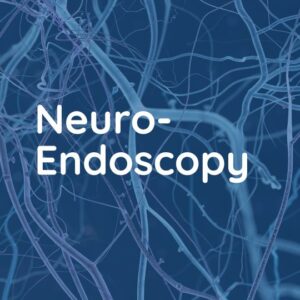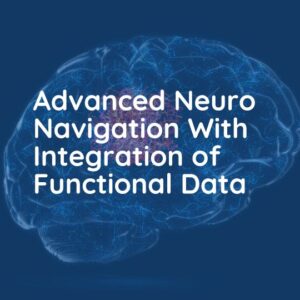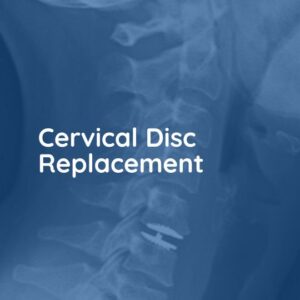
Advanced Neuro Navigation With Integration of Functional Data
Advanced neuro-navigation with integration of functional data is a specialized surgical technique that uses real-time imaging and computer-assisted navigation to precisely guide surgical instruments to the targeted areas of the brain. This technique combines multiple types of data, such as anatomical and functional data, to improve accuracy, safety, and outcomes of the surgery.
Procedure
Preoperative planning: Before the surgery, the patient undergoes a series of tests such as MRI, CT scan, and functional imaging such as fMRI or PET scan. These tests help to identify the exact location and extent of the brain abnormality, as well as the critical areas of the brain that control essential functions such as movement, sensation, language, and vision.
Image-guided navigation: During the surgery, the surgeon uses advanced imaging and computer software to create a 3D map of the patient’s brain, which allows them to precisely navigate the surgical instruments to the targeted area. This technique helps to reduce the risk of damage to critical areas of the brain and to minimize the size of the incision.
Integration of functional data: In addition to anatomical data, the surgeon also uses functional data such as fMRI or EEG to identify the areas of the brain that control essential functions. This information is then integrated into the navigation system, which allows the surgeon to avoid these areas during the surgery and minimize the risk of neurological deficits.
Intraoperative monitoring: During the surgery, the patient’s brain function is continuously monitored using techniques such as electrocorticography (ECoG) or intraoperative neuromonitoring (IONM). These techniques help to ensure that critical areas of the brain are not damaged during the surgery.
Benefits
Improved accuracy: This technique allows the surgeon to precisely navigate the surgical instruments to the targeted area, which reduces the risk of damage to critical areas of the brain.
Minimally invasive: The use of advanced imaging and navigation techniques allows the surgeon to minimize the size of the incision, which reduces the risk of complications and promotes faster healing.
Enhanced outcomes: This technique improves the accuracy and safety of the surgery, which can result in better outcomes and a shorter recovery time.
Risks
However, there are risks associated with any surgical procedure, including bleeding, infection, and damage to critical brain areas. Additionally, some patients may experience discomfort or anxiety during the procedure.
Recovery
Recovery time following advanced neuro-navigation with integration of functional data can vary depending on the individual and the extent of the surgery. However, most patients are able to resume normal activities within a few weeks following the procedure, and regular follow-up appointments with the healthcare provider are important to monitor the effectiveness of the treatment and assess the patient’s recovery.






